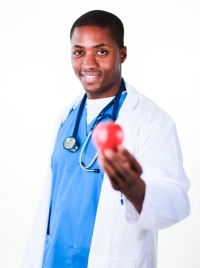By Beth Kurt, MD
 Less than 20 percent of children survived cancer in the 1960’s. Fortunately, the five-year survival rate for childhood cancer is now approaching 80 percent. (1)
Less than 20 percent of children survived cancer in the 1960’s. Fortunately, the five-year survival rate for childhood cancer is now approaching 80 percent. (1)
As a consequence of these improved survival rates, more teenagers and young adults who have undergone cancer therapy will go on to face special challenges when transitioning from active cancer treatment to resuming a normal life. Many survivors of childhood cancer experience late occurring health complications related to their cancer or its treatment; thus, regular medical follow-up is critical to maintain good health.
Recent studies have found that significant numbers of childhood cancer survivors do not receive the follow-up care needed. (2) The reasons may include financial difficulties, lack of insurance or a desire to move past a cancer diagnosis. To make matters more difficult, most primary care providers have cared for only a handful of childhood cancer patients and are not well-equipped to refer families to cancer centers to provide the best follow-up care. (3)
At our After Care and Transition (ACT) Program clinic visits, we provide a summary letter to the patient and their primary care physician, which details information about the cancer diagnosis, treatment and health problems that may occur as a result. We also provide resources for further reading and ways to stay healthy.
Among the issues that cancer survivors need to discuss and learn about at their follow-up doctor visits are:
• Signs and symptoms that should prompt a visit to their doctor.
• Risk for infertility and premature menopause.
• Risk for long-term heart toxicity and ways to improve or maintain heart health.
• Resources for mental health counseling.
• College scholarship opportunities.
• Other preventative health measures: use of sunscreen/risk for skin cancer, hearing protection etc.
One particular challenge stems from normal tensions between adolescent desires for autonomy and privacy, and strong parental desires to protect and care for their child both during and long after a life-threatening illness.
 During appointments with our patients, we do our best to educate adolescents and young adults about the importance of learning their own medical histories and speaking up when they have a concern about how they are feeling. This can be difficult, as adolescents may be inclined to deny symptoms like pain, depression or certain worries in front of their parents, and “neglect” to share information unless the right questions are asked. Well-meaning parents, on the other hand, are so used to being the primary historian and making decisions for their child, that it’s a learning process for them, too.
During appointments with our patients, we do our best to educate adolescents and young adults about the importance of learning their own medical histories and speaking up when they have a concern about how they are feeling. This can be difficult, as adolescents may be inclined to deny symptoms like pain, depression or certain worries in front of their parents, and “neglect” to share information unless the right questions are asked. Well-meaning parents, on the other hand, are so used to being the primary historian and making decisions for their child, that it’s a learning process for them, too.
We encourage patients and their physicians to contact us if they have questions about how a health concern may relate to their cancer history. All of us at the ACT clinic keep an open-door policy, even after patients have officially “graduated” from the practice.
References:
1) National Cancer Institute
2) Oeffinger KC, Mertens AC, Hudson MM, Gurney JG, Casillas J, Chen H, et al. Health care of young adult survivors of childhood cancer: a report from the Childhood Cancer Survivor Study. Ann Fam Med 2004;2:61-70.
3) Nathan PC, Daugherty CK, Wroblewski KE, Kigin ML, Stewart TV Hlubocky FJ et al, Family physician preferences and knowledge gaps regarding the care of adolescent and young adult survivors of childhood cancer. J Cancer Survivor, 2013.
– Beth Kurt, MD, pediatric oncologist, Spectrum Health Medical Group and co-director of the After Care and Transition (ACT) Program for childhood cancer survivors at Helen DeVos Children’s Hospital in Grand Rapids, MI.
